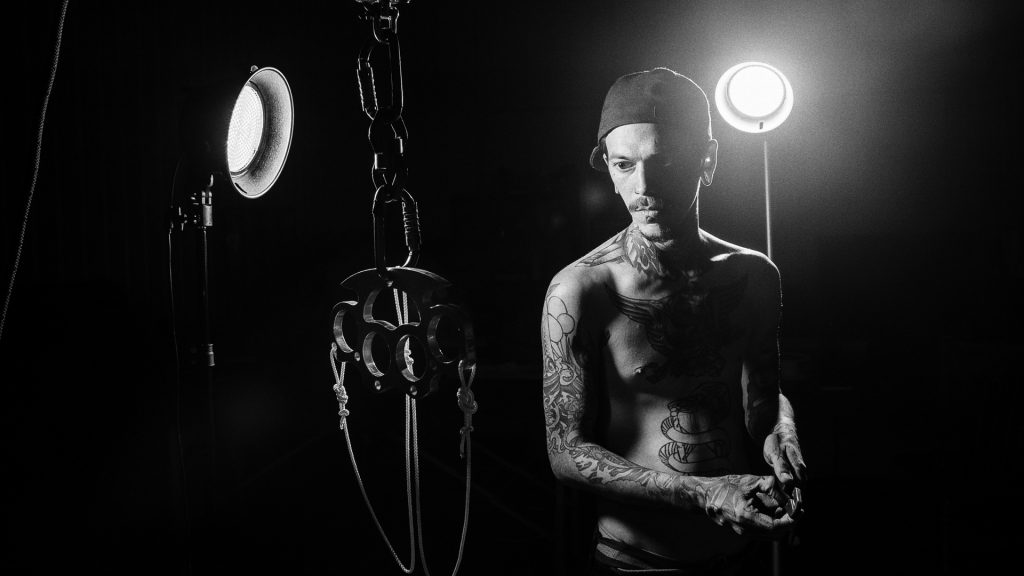In late November 2017, a Daily Iowan reporter was given access to a demonstration. Two local businessmen opened their doors that evening to give this reporter a glimpse into a resurrected practice that dates back thousands of years.
Release Body Modification owner Steeve Easley and colleague Kyle Bingham filled a niche that has increased in popularity, especially in the tattoo and piercing crowds: It’s called human suspension. It’s the practice of hanging by skin stabbed hooks from their backs, chests, and even their knees to induce a sort of pain-inflicted euphoria.
It’s a practice born of rite and ritual, with its origins planted firmly in Native American cultures and North American tribes, dating back thousands of years. Modern-day suspension was popularized in North America first by a man by the name of Allen Falkner in the 1980s.
Since then, suspension has grown into a small yet passionate community worldwide, and Steeve and Kyle are part of approximately a dozen active suspension enthusiasts in eastern Iowa.
The pair has performed for tattoo conventions, and Kyle was suspended at rock festivals from 2012 to 2016 in front of thousands of concertgoers, either grimacing or awed, including wide-eyed children with hand-smashed faces. Steeve and Kyle are both in their late-20s. While heavily tattooed and pierced, they carry a sometimes crass but always cool niche-market professionalism. They fit the part.
The space for November’s demonstration was Release’s workshop on the outskirts of Iowa City in an industrial warehouse lot. It’s kept clean and tidy. There’s a lounge in the back furnished with a corner couch and big screen TV, and one of their favorite angsty rock, punk, or metal songs is usually playing in the background. It’s also loaded with the regularly used, slightly dusty rock cutting and polishing equipment for the custom jewelry work sold at their shop downtown. But there’s a dedicated space set aside for a large shelving unit that’s just chock full of suspension equipment.
The duo set up an expandable 20-foot suspension tripod rigged with heavy-duty climbing ropes, pulleys, and an oversized polished aluminum brass-knuckle suspension plate. The knuckles were only a few sizes too small to fit the likes of a rageful Paul Bunyan comfortably.
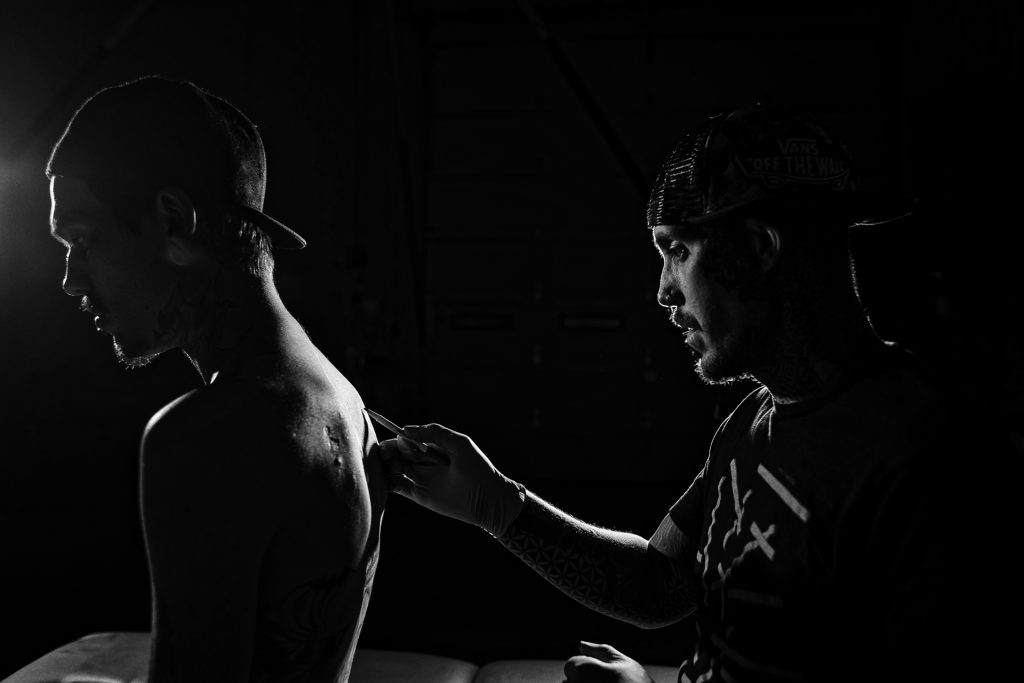
“Today, we’re going to be suspending Kyle in a 2-point suicide,” Steeve said, using a term referring to the way people dangle when suspended by two points in their upper back. Luckily, Kyle prefers this method, saying he’d get backstabbed any day over taking a hook in the chest. Fair enough.
But suspending safely takes a bit more preparation than just slinging rope and pulleys. Medical-grade sterilization of the piercing site and the heavy gauge hooks are required. Steeve slathered Kyle’s back in rubbing alcohol and iodine. Scars from previous piercings covered his upper back, looking like pockmarks on lunar landscape. The hooks were sterilized in a medical-grade autoclave and handled with carefully gloved hands.
“This is the worst part. Having to take these hooks,” Kyle said bluntly. But for some, this isn’t the case.
“Some people enjoy taking hooks and will volunteer to get pierced just to show others how to throw a hook,” Steeve replied. When the preparation was complete, Kyle lay down on an industry standard leather massage table. It was time. Steeve cracked a crude joke. Kyle took a deep breath, pursed his lips, and clenched his fists. The 6-gauge hooks were thrust into Kyle’s back. The needle tore through while the hook stretched the wound — a technique used to prevent excess bleeding.
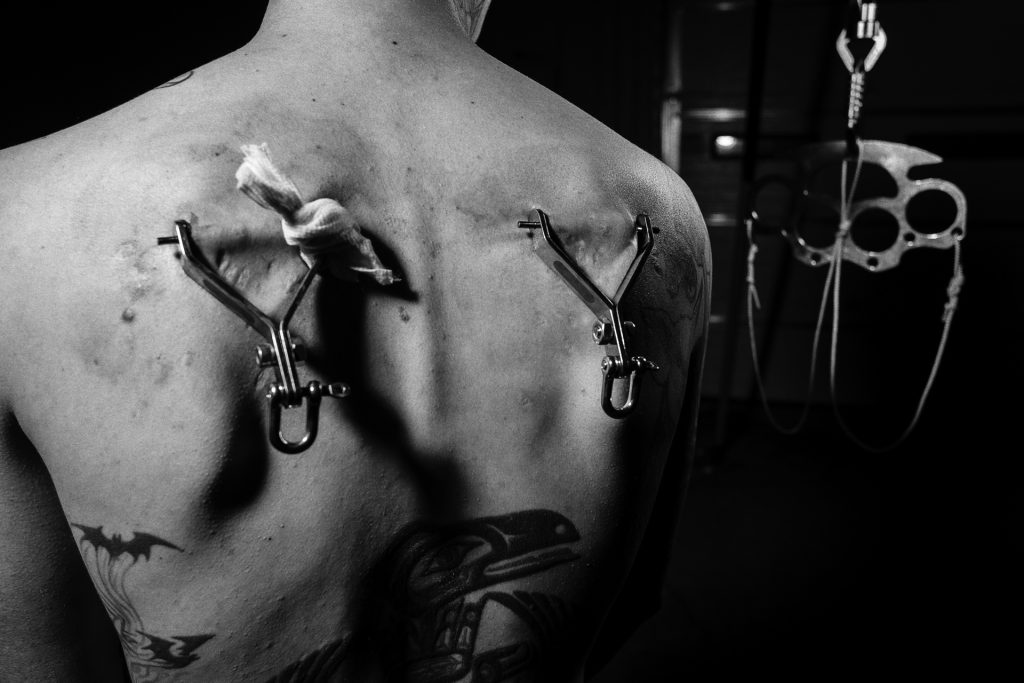
“If you stretch the hole, there’s nowhere for it bleed,” Steve said. As for Kyle, the worst was over. With the hooks stuck snuggly in his back, he rose from the table with his new mechanical wings. He was ready. Steeve threaded the hooks into the giant brass-knuckle plate. Then, with a look and a nod, Kyle ran fearlessly into the air with a heavy helping of pulley-aided muscle power. A heavy-gauge hook was all that was keeping him from the earth.
“It’s like you’re flying,” Kyle had previously said.
He swung back and forth and back and forth like a human pendulum, with several inches of metal-stretched skin pulled from his frame. He flew effortlessly a couple of feet in the air, a nonchalant expression set on his face. “Cool,” thought the somewhat disturbed and slightly hyperventilated DI photographer who was voluntarily thrust into the middle of something he’d never fully understood.
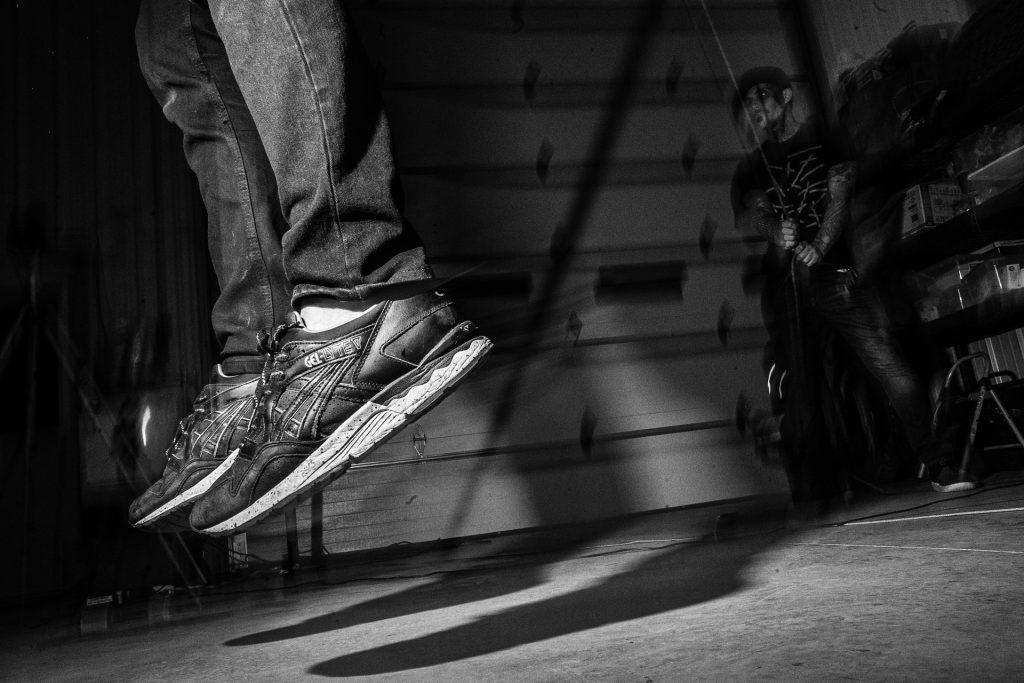
Kyle’s feet eventually succumbed to gravity when the 10-minute session was over. While still heavily overloaded on endorphins and adrenaline, it was time to take out the hooks. Now, one of the things that didn’t get mentioned before this point is that a person’s skin sucks in air during a suspension, which makes sense. But that air also gets discharged when the hooks are removed. That instance, coupled with the smell of hot sweat and salted beef jerky lingering in the air, the scent is enough to trigger a flashback to anyone accustomed to the business end of a butcher shop. But I digress.
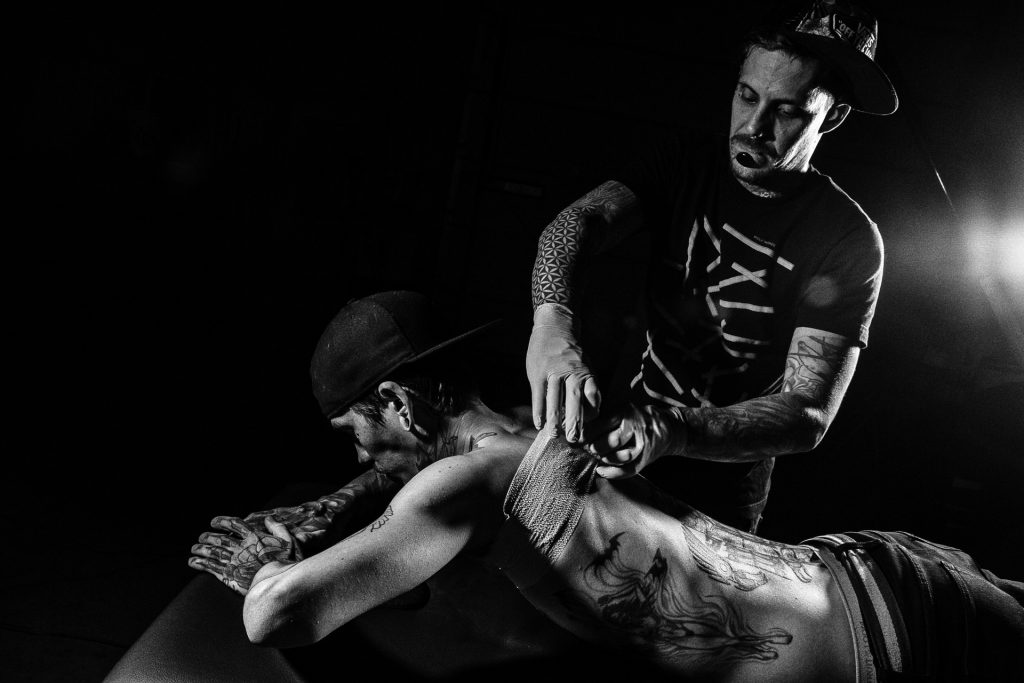
Suspension enthusiasts often describe a sensation of bliss, out-of-body experiences, and complete euphoria, while others say they have never felt freer or closer to God. For the rest of us, we could assume a marathon runner’s high being a close equivalent or even the adrenaline rush of skydiving for those few of the crazy brave. If you ask a dozen people familiar with the practice why they do it, you’re likely to get a dozen different answers. It’s truly a type of feeling that can’t be known except by those who already know what it is.
Perhaps Steeve summed it up as good as any: “Once your feet leave the ground, everything else in life seems a bit less significant, at least if not only for that moment … It’s just such a release of so many things.”



